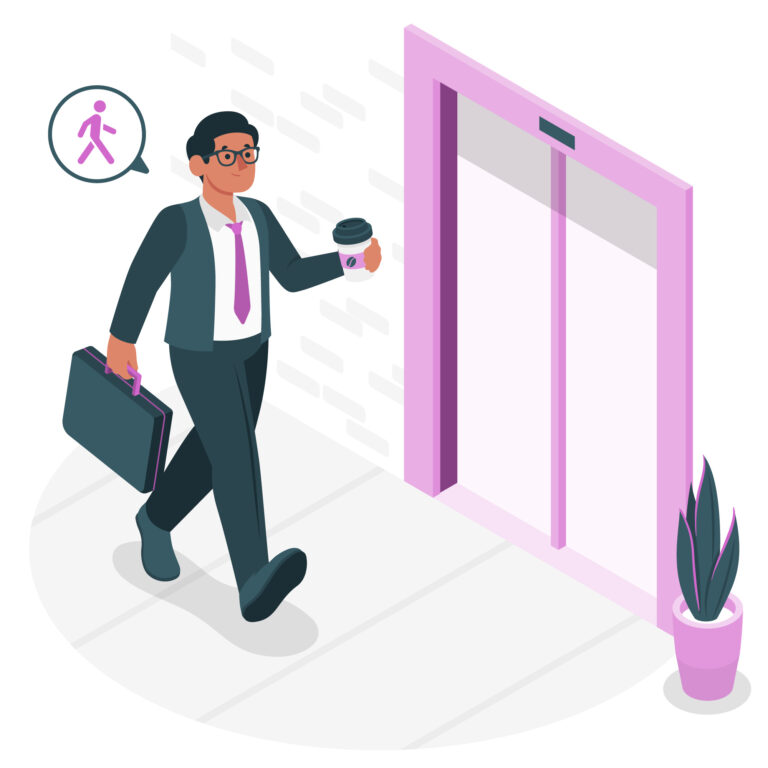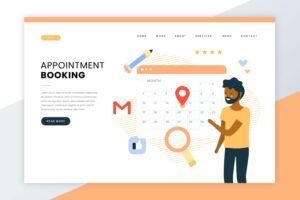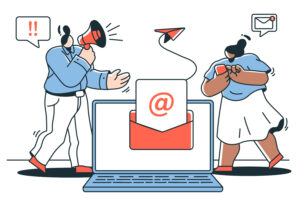If you’re debating whether to allow walk-in appointments in your business or stick to scheduling only, knowing what you’re getting into would be beneficial. While walk-in appointments may seem like a great idea to attract new customers, you need to figure out whether it’s worth losing the predictability and efficiency of the booking system.
Let’s dive deeper into walk-in appointments and their advantages and disadvantages to determine how to get the most out of them and implement them carefully in your business. At the end of this blog post, you may decide walk-ins are a great choice for your business, or just stick to the good ol’ scheduled appointments. It’s important to assess your business, and its needs and dive deeper into how walk-in appointments will impact your workflow.
What Is a Walk-in Appointment?
The walk-in appointment is when customers can show up and get services without pre-scheduling appointments. They usually work on a first-come first-serve basis and instead of booking an appointment in advance, customers just walk in and wait their turn.
Walk-in appointments are widely spread in the healthcare industry, beauty salons, barbershops, veterinary clinics, etc. In healthcare, customers usually take advantage of walk-ins when they require immediate attention and can’t wait for scheduled appointments. However, urgency is not the only reason businesses and customers use walk-in appointments.
Same-Day vs Walk-in Appointments: What’s the Difference?
The difference between same-day vs walk-in appointments is that same-day appointments are scheduled in advance for the same day, while walk-ins are without any prior scheduling and customers wait in line for their turn.
Both walk-in and same-day appointments are usually a matter of urgency because customers are willing to get the first available spot without choosing their favorite service provider. Same-day appointments don’t offer flexibility and are subject to availability and demand for that specific service. The good thing about same-day appointments is that customers still have their time slot, reducing the time they need to wait in line.
On the other hand, walk-in appointments allow customers to show up during working hours and wait until employees have time to offer them services. This is only possible when the business is not constantly busy and you have staff to attend to customers at all times. You don’t want customers to wait too long, and you also need to create a system to track who arrived first.
Just as every business has an appointment cancellation policy, you should also develop a walk-in appointments policy and decide whether that’s something you can offer to your customers without disrupting your staff’s schedules and decreasing customer satisfaction.
Advantages of Walk-in Appointments for Service Providers
Some customers prefer it
There are old-school customers who like to spontaneously walk in and get the job done without thinking ahead. Some of these customers prefer service providers who allow walk-in appointments which means you’re losing some business if you don’t. They don’t want to schedule appointments days and weeks in advance. Instead, they show up when it’s convenient for them. The point is, they’d rather wait than plan beforehand.
Earn extra revenue
By implementing walk-in appointments in your business, you can get some extra revenue and avoid idling. Sometimes business is slow, and this is a great way to boost your revenue and attract new customers. Who knows, maybe they’ll even become returning customers who always come back to your business!
Decrease the negative impact of no-show appointments
No-show appointments are definitely something every business owner dreads. They disrupt your schedule, have a negative impact on your revenue, and waste your resources. Allowing walk-in appointments can make up for no-shows so you can maximize the profitability of your business.
Flexibility
Walk-in appointments offer flexibility to customers who maybe need just to address minor concerns or quick services without the need for lengthy appointments. For some reason or another, some customers can face challenges when scheduling appointments, and walk-in appointments can be a great alternative.
Disadvantages of Walk-in Appointments
Long wait lines

Image by upklyak on Freepik
Customers don’t have a lot of patience nowadays, do they? Long waiting lines can seriously harm your business by negatively affecting customer experience. Once the customer has a bad experience due to waiting, they aren’t likely to come back. Instead, they’ll turn over to your competitors who have a better system in place. Nobody wants to wait for hours to get a haircut or their nails done. This is especially important in peak periods when there is a high demand for certain services. Because of that, prioritizing appointment scheduling and customers who booked in advance is a great way to offer an exceptional customer experience.
Customers can’t choose their favorite service provider
Stars don’t always align. With walk-in appointments, both you and the customers rely on pure luck in most cases. What are the chances that customer walks into the salon and their favorite hairstylist is available? Most customers prefer certain employees and they’ll rather schedule an appointment two weeks in advance if that means they can choose who performs the service.
Customers can’t plan their day
Is it going to be half an hour appointment or 3 hours waiting in line? Customers don’t like uncertainty and they have other tasks to do. Waiting for hours for their turn disrupts their schedules and makes them nervous. More often than not, they may turn around and leave without getting the service they intended. Walk-in appointments don’t guarantee immediate access to services which can result in turning customers away or large delays.
Overwhelming staff
Your employees can feel extremely overwhelmed if you allow walk-in appointments because they can rarely catch a break. Just as they’ve finished the scheduled appointment, another customer who didn’t book their slot shows up. It can influence employee satisfaction and decrease the quality of service they provide due to fatigue and crazy schedule.
Hard to manage
Walk-in appointments are extremely hard to manage because you never know what to expect. Let’s suppose you have both scheduled and walk-in appointments. What if you’re already pre-booked for the day and dozens of customers show up on your doorstep? On the other hand, some days are slow and you don’t have too much work on your plate, and only a few customers actually show up.
Walk-in Appointments Best Practices
Walk-in appointments can benefit your business if you combine them with scheduled appointments and follow some best practices. What are important things to pay attention to when implementing walk-ins?
You should analyze the daily and weekly occupancy in your business to determine how much time you have to allocate to walk-in appointments. Another thing that would also help you is to calculate the no-show rate in your business. Analyzing patterns, peak periods, occupancy and no-show rate will help you create a tailored strategy and decide whether you need walk-in appointments at all. If you decide to take advantage of walk-in appointments, make sure to strategically implement all these insights to avoid long lines and dissatisfied customers.
Implementing these best practices can even help your marketing strategy. How? For example, if Wednesdays are slow in your business, you can promote walk-ins and offer discounts to encourage customers to show up.
Walk-in vs Scheduling Appointments: What’s Better?
When you schedule appointments, you have better control over everything – from schedules, and managing employees, to the efficiency and profitability of your business. You’ll know exactly how many customers you have and how much revenue you’ve earned. And with that knowledge, you can easily find areas for improvement.
Scheduling appointments online offers flexibility and convenience for everyone – your staff and customers and also for you as an owner. For example, in healthcare, 67% of patients prefer online booking. Why is that? Because they can find available slots in seconds without spending time on back-and-forth messages and lengthy phone calls. They don’t even need to wait for opening hours, because they can schedule appointments 24/7.
The best case scenario for your business is to rely on a comprehensive booking solution, but also offer walk-ins for customers who prefer it. You’ll increase customer satisfaction and also attract new customers, but be careful. It’s always a good idea to ask customers for feedback and to share their preferences, but also ask employees what they think about this option. Once you’ve gathered all this information, you can create a walk-in appointment strategy that will work for your business.
You can streamline the process of gathering this information with one simple tool. Trafft is the booking solution you’ve been looking for because it’s carefully crafted for service providers like you. With the professional dashboard, you can analyze important metrics such as occupancy, earned revenue, and returning customer rate. Fuel your growth by combining a seamless round-the-clock booking experience in Trafft and the spontaneity of walk-in appointments.
Ready? Try Trafft for free and maximize the profitability of your business!



